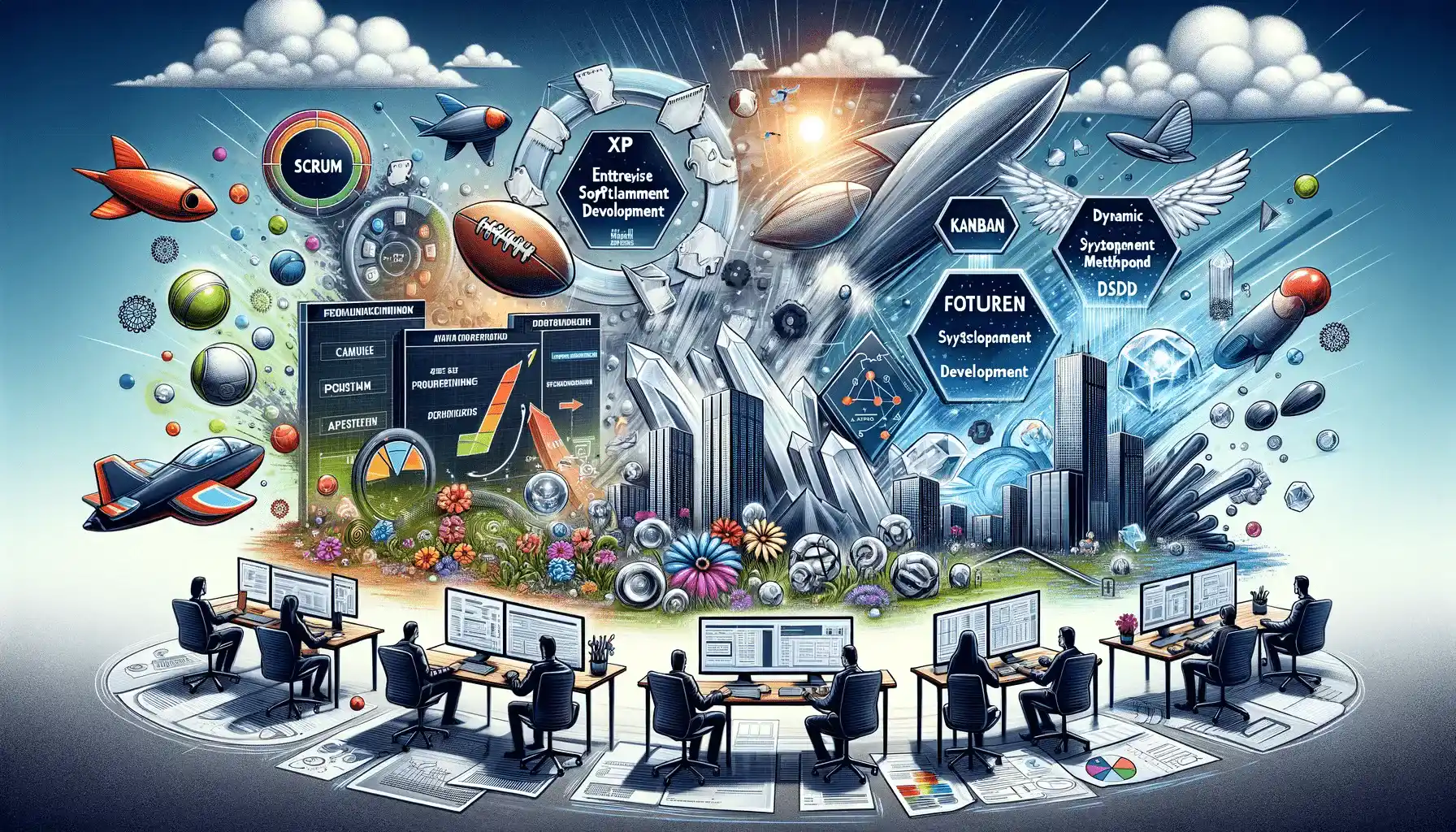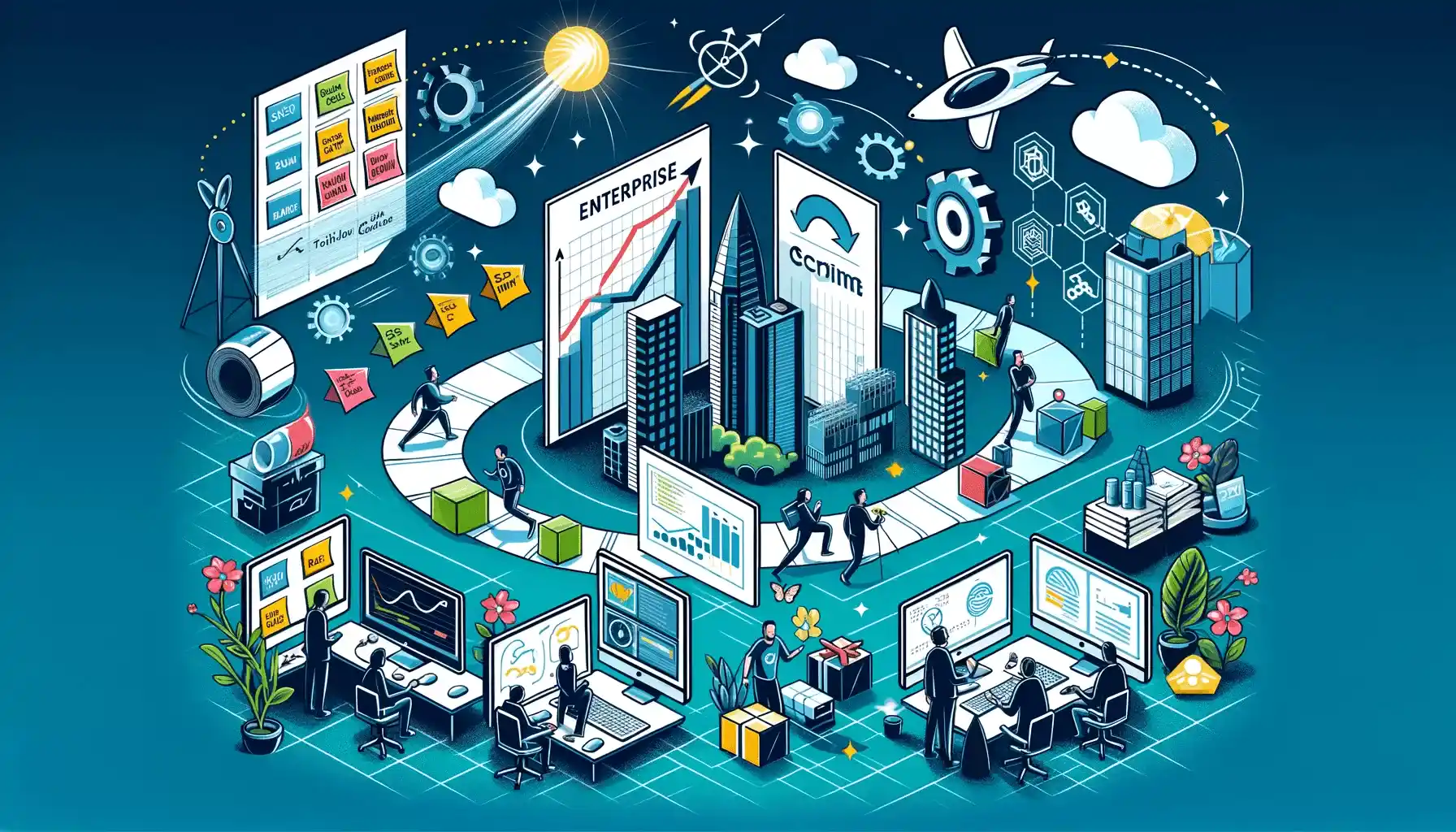Table of Contents
Agile methodologies represent a paradigm shift in software development, emphasizing flexibility, collaboration, and iterative progress. In contrast to traditional approaches, Agile breaks down the development process into smaller, manageable stages, fostering continuous feedback and adaptation. This iterative approach enables developers and stakeholders to respond rapidly to changing requirements, reducing the risk of project failure and increasing customer satisfaction.
Central to Agile methodologies is the concept of continuous iteration, where development and testing activities occur in parallel and are tightly integrated. This ensures that any issues or changes can be addressed promptly, maintaining momentum and minimizing delays.
Additionally, Agile promotes frequent collaboration with customers throughout the development lifecycle, allowing for real-time feedback and alignment with their evolving needs.

By embracing Agile methodologies, teams can enhance their ability to deliver high-quality software efficiently and effectively. The emphasis on collaboration, flexibility, and continuous improvement empowers developers and stakeholders to navigate complex projects with confidence, ultimately driving greater success and value for their organizations.
7 Dynamic Agile Methodologies
1. Kanban
Agile Methodologies encompass various principles and practices aimed at facilitating flexible and efficient software development. One such methodology that aligns closely with the Agile principles is Kanban. This approach embraces incremental progress and emphasizes transparency throughout the development process.
In Kanban, project traceability is achieved through the use of visual Kanban boards, which typically consist of columns representing different stages of work, such as “to do,” “in progress,” and “done.” Each task or user story is represented by a card that moves through these columns as work progresses. This visual representation provides a clear and transparent view of the team’s progress and the overall workflow.
Kanban’s emphasis on transparency ensures that all team members have visibility into the status of tasks and can easily identify bottlenecks or areas for improvement. By promoting continuous improvement and collaboration, Kanban facilitates the fulfillment of Agile principles, such as delivering working software frequently, welcoming changing requirements, and fostering communication among stakeholders.
Overall, Kanban serves as a valuable tool within the broader framework of Agile Methodologies, enabling teams to adapt and respond effectively to evolving project needs while maintaining a focus on delivering high-quality software.
2. SCRUM
Agile Methodologies, such as SCRUM, are characterized by their complex development principles and highly prescriptive frameworks. Within SCRUM, a central tool for tracking progress is the scrum board, which visually organizes tasks and promotes transparency and collaboration among team members.
Under SCRUM, the product owner collaborates with business and development teams to create a product backlog, from which sprint cycles are executed by various team members. These cycles typically last two weeks to a month, based on Agile estimation.
While SCRUM offers benefits like transparency and collaboration, it can also lead to rushed programming and inadequate documentation. However, SCRUM’s emphasis on partnership with management teams and delivery of product features makes it suitable for many companies.
Stand-up meetings, a time-boxed daily event in SCRUM, facilitate communication and problem-solving among team members, maximizing the methodology’s effectiveness. In summary, SCRUM exemplifies Agile Methodologies’ focus on iterative development, collaboration, and adaptability to deliver high-quality software products.
3. Extreme Programming
Agile Methodologies, such as Extreme Programming (XP), prioritize customer satisfaction by promoting continuous development. XP emphasizes feedback, communication, and teamwork, similar to SCRUM, while also incorporating short development cycles or sprints. This framework fosters a highly efficient and productive environment for software development teams.
In situations with constant and varying customer demands, XP excels. Even if changes in customer requests arise during advanced phases of development, XP encourages developers to embrace them, much like a casino motivates players to take advantage of bonuses.

Feedback collection is integral to testing the project within the XP framework. It begins in the initial stages and continues as the system’s output progresses. Additionally, spot checks are conducted to ensure seamless implementation of any customer requirements. XP’s adaptability and focus on customer satisfaction make it a valuable approach within the realm of Agile Methodologies.
4. Crystal
The Crystal methodology, often referred to as a “lightweight methodology,” is a subset of Agile methodologies known for its minimal documentation and project review processes. Unlike other frameworks within the Agile umbrella, Crystal lacks a rigid set of rules or prescribed approaches. Instead, it emphasizes adaptability and responsiveness to various project factors.
Within the Crystal method family, each color represents a distinct methodology tailored to specific project environments and team sizes. These methodologies include Crystal Sapphire, Crystal Diamond, Crystal Maroon, Crystal Red, Crystal Orange Web, Crystal Orange, Crystal Yellow, and Crystal Clear. Each color signifies a different level of complexity and formality, allowing teams to select the most suitable approach based on their unique circumstances.
Overall, the flexibility and adaptability inherent in the Crystal methodologies align closely with the principles of Agile, emphasizing collaboration, iterative development, and continuous improvement. By leveraging the diverse range of Crystal methodologies, teams can effectively tailor their approach to meet the specific requirements and challenges of their software development projects.
5. Dynamic Systems Development
Dynamic Systems Development Method (DSDM), a prominent Agile methodology, emerged to fulfill the demand for standardized industry practices in rapid software delivery. DSDM acknowledges the inevitability of project modifications and prioritizes the timely delivery of high-quality products. It operates on a business-driven approach, ensuring that software development aligns closely with organizational objectives.
DSDM provides a robust framework that guides the planning, execution, management, and scaling of software development processes. This methodology emphasizes adaptability and flexibility, enabling teams to respond effectively to changing requirements and market dynamics. By fostering collaboration between stakeholders and development teams, DSDM ensures that software solutions meet evolving business needs while maintaining a focus on quality and delivery timelines.
In essence, Agile methodologies like DSDM offer a structured yet flexible approach to software development, allowing organizations to navigate the complexities of modern software delivery with confidence and agility.
6. Feature-driven Development
Feature-driven development (FDD) stands out among Agile methodologies due to its distinctive approach, contrasting with frameworks like SCRUM and XP. FDD prioritizes rigorous processes, including domain walkthroughs, emphasizing design, code, and inspection. Central to FDD is its focus on developers, with iterations occurring every two weeks, guided by a list of features. Each feature undergoes a development and design plan, followed by unit testing and inspections to determine readiness for the build phase.
FDD promotes high-quality design and code documentation while ensuring strict organization throughout the development process, resulting in consistently viable software. However, early imperfections in FDD may lead to prolonged correction periods, as it requires advanced planning foresight and design expertise.

Despite this, FDD is particularly beneficial for large-scale enterprises operating in sectors such as banking and finance, where quality control and process maturity are paramount. With its emphasis on meticulous planning and execution, FDD serves as a valuable Agile methodology for delivering robust software solutions in demanding industries.
7. Lean Software Development Methodology
Agile Methodologies encompass various approaches to software development, including Lean methodology. Lean software development emphasizes delivering value to customers through a holistic approach. Central to Lean is the concept of waste reduction, aiming to eliminate inefficiencies and unnecessary processes.
The principles guiding Lean methodology include eliminating waste, fostering continuous learning, making decisions at the last responsible moment, and prioritizing fast delivery. Moreover, Lean emphasizes team empowerment, encouraging collaboration and shared decision-making.
Building integrity within the team and the software product is another key aspect of Lean, ensuring that the software meets both customer needs and internal quality standards. Finally, Lean methodology promotes optimizing the entire software development process, from initial concept to final delivery, to achieve the best possible outcomes for both customers and the organization.
Conclusion
When navigating the array of Agile methodologies, it’s vital to adopt a dynamic mindset. Assessing the pros and cons of each framework is essential for selecting the optimal method for your business. Choose a framework capable of delivering exceptional digital experiences in today’s competitive landscape.
Moreover, the right Agile approach can attract top talent to your team. This comprehensive guide explores the various Agile methodologies, providing insights into their concepts and applications. By understanding the nuances of each framework, you can make informed decisions that align with your organization’s requirements. Ultimately, leveraging Agile methodologies effectively is crucial for achieving success in software development.